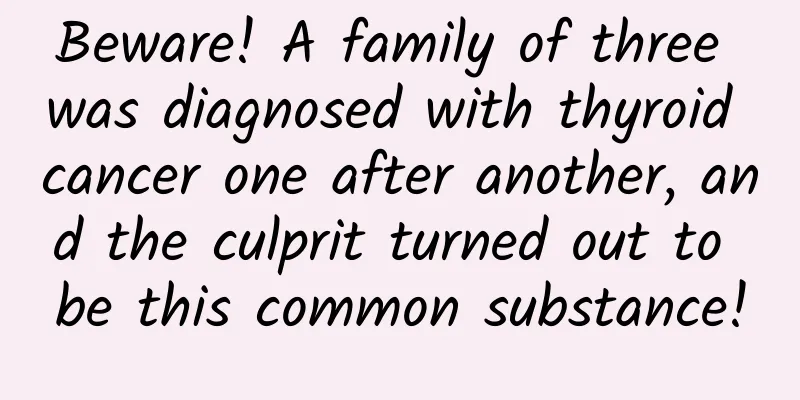Is non-gonococcal vaginitis easy to treat? What are the methods?

|
When human health is threatened and harmed by disease, the first thing to do is to seize the time to treat it. Do not delay and let the disease worsen, especially for non-gonococcal vaginitis. This disease is highly contagious, and timely and correct treatment is crucial. Don't be careless. So is non-gonococcal vaginitis easy to treat? Patients with non-gonococcal disease must pay attention to early diagnosis and early treatment; treatment should be carried out in a regular hospital, and should be treated at the same time as the sexual partner, and should not be abandoned halfway. During the treatment, you should pay attention to rest, avoid strenuous activities, and refrain from sexual intercourse. Avoid eating irritating foods. Clothes and utensils should be washed and disinfected. The vulva should be cleaned every day with 1:5000-1:8000 potassium permanganate solution or Chlorhexidine. There are many antibiotics that are effective in treating non-gonococcal urea. These drugs include tetracycline, doxycycline, azithromycin, clarithromycin, roxithromycin, erythromycin, etc.; streptomycin and spectinomycin are effective against mycoplasma but have little effect on chlamydia infection; vancomycin is basically ineffective against chlamydia, so it is not used. Many people are resistant to antibiotics, so it is best to do a drug sensitivity test and then use effective drugs. Follow-up should be done after treatment. If it is ineffective, another treatment method should be used. Therefore, patience is required during treatment. For those infected with Candida albicans, in terms of medication, first wipe the secretions on the vulva and vagina with cotton wool, then rinse with 1:5000 potassium permanganate or 2% to 3% sodium bicarbonate solution. After drying, apply 0.5% to 1% gentian violet solution, and then use antifungal suppositories, such as nystatin, clotrimazole, miconazole, econazole, bifonazole, etc., and put one suppository into the vagina before going to bed every night for 7 consecutive days. If the effect is not good, you can take fluconazole 150 mg orally once a day for 3 consecutive days; or itraconazole 200 mg per day for 3 days as a course of treatment. If necessary, repeat the course after the next menstruation. If non-gonococcal vaginitis is not treated seriously or is not treated thoroughly, it is easy to cause recurrence. After treatment, patients with gonococcal vaginitis still need to go to the hospital for a gynecological examination and vaginal secretion test after each menstruation, for 3 consecutive times. If signs of gonococcal infection are found once during this period, it cannot be considered cured, but rather a relapse or reinfection, and continued treatment is required. Through the above introduction, everyone has a clear idea of whether non-gonococcal vaginitis is easy to treat. Any disease has a corresponding treatment method. After all, current medical technology is still very advanced. But don’t be lucky. After all, this disease is difficult to treat and you must remain patient. |
<<: Is non-gonococcal vaginitis easy to treat? What is the method?
>>: What are the main symptoms of non-gonococcal vaginitis?
Recommend
Reasons why middle-aged women gain weight
When women reach middle age, they will find that ...
How long does it take for menstruation to come after induced abortion?
If a girl accidentally gets pregnant, she will be...
Chinese medicine formula for women's weight loss
For women who love beauty, obesity is one of the ...
Ovulation day calculator
Ovulation Calculator is a software tool developed...
I went back to work the next day after the successful abortion.
Medical abortion is a commonly used method of med...
When to add water to lard?
As we all know, lard is a common edible oil. It i...
How big should the embryo be at eight weeks?
When a mature fertilized egg implants in the moth...
[Fat Bear Science] It is a rumor that drinking coffee causes cancer, but these eating habits really should not become "habits", maybe you have them!
Previously, everyone was flooded with news about ...
What is the effect of frequently increasing the speed on the engine? How to reduce the speed of the car at high speed?
In addition to the speed, the car's dashboard...
Symptoms of chronic colitis in women
Chronic colitis is not a serious disease in the e...
Revealed! Embarrassing things that women do in the delivery room
Maybe you have learned something about childbirth...
Insulin: the blood sugar lowering hero and sugar-friendly partner!
Author: Nie Xuanxuan, The Fifth Medical Center, P...
Can I get pregnant if I have breast nodules?
If women develop breast nodules, the first thing ...
Can moxibustion treat infertility?
Many people know that moxibustion can regulate qi...
Shanxi's "sleeping province" has become popular! It turns out that there is such a thing as a "nap gene"
It is said that the two things that Shanxi people...









